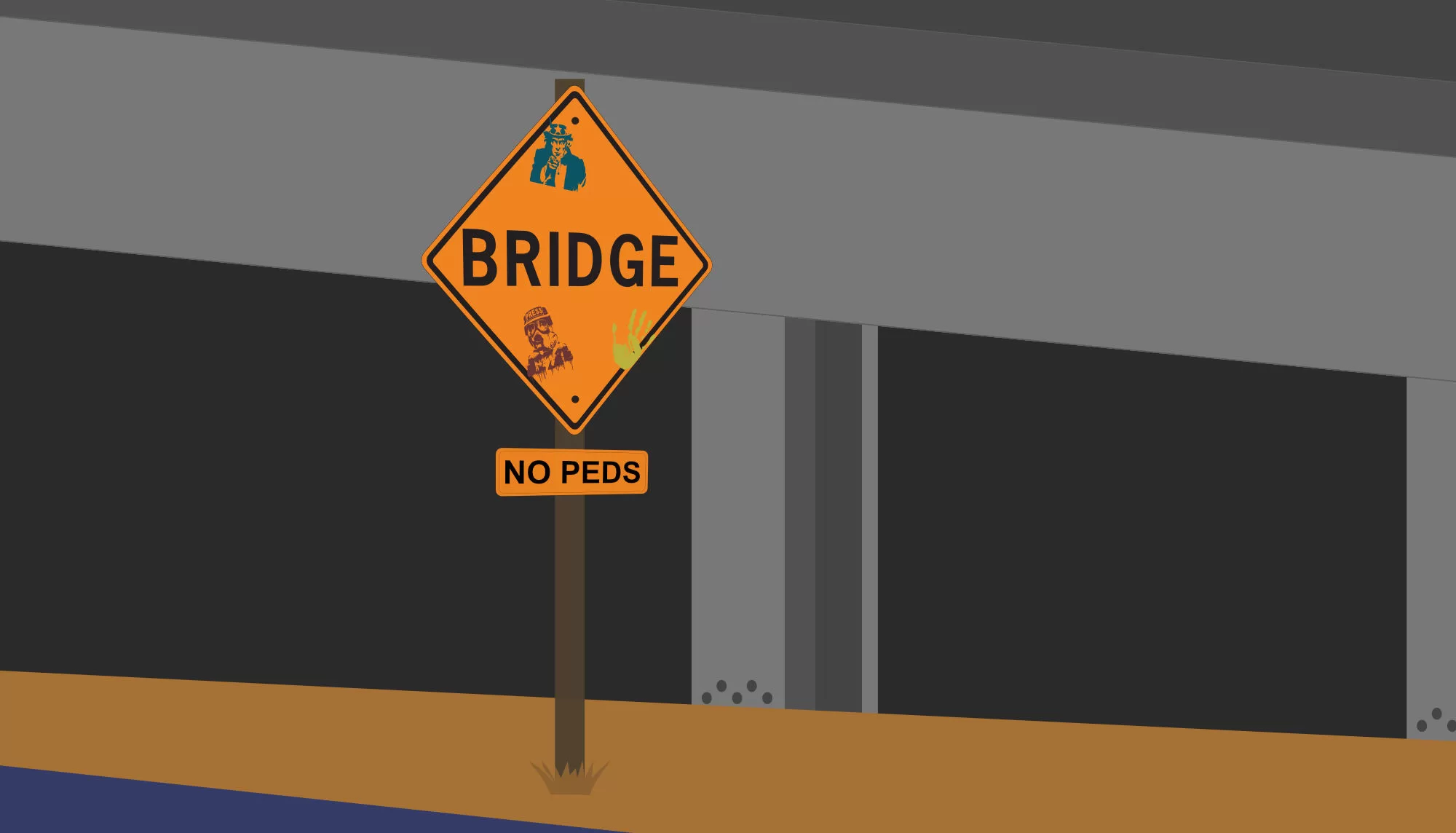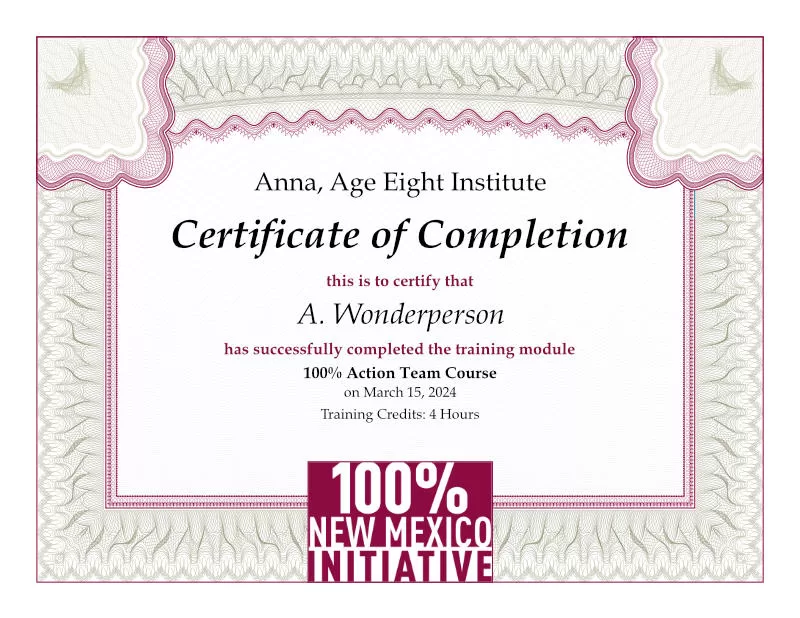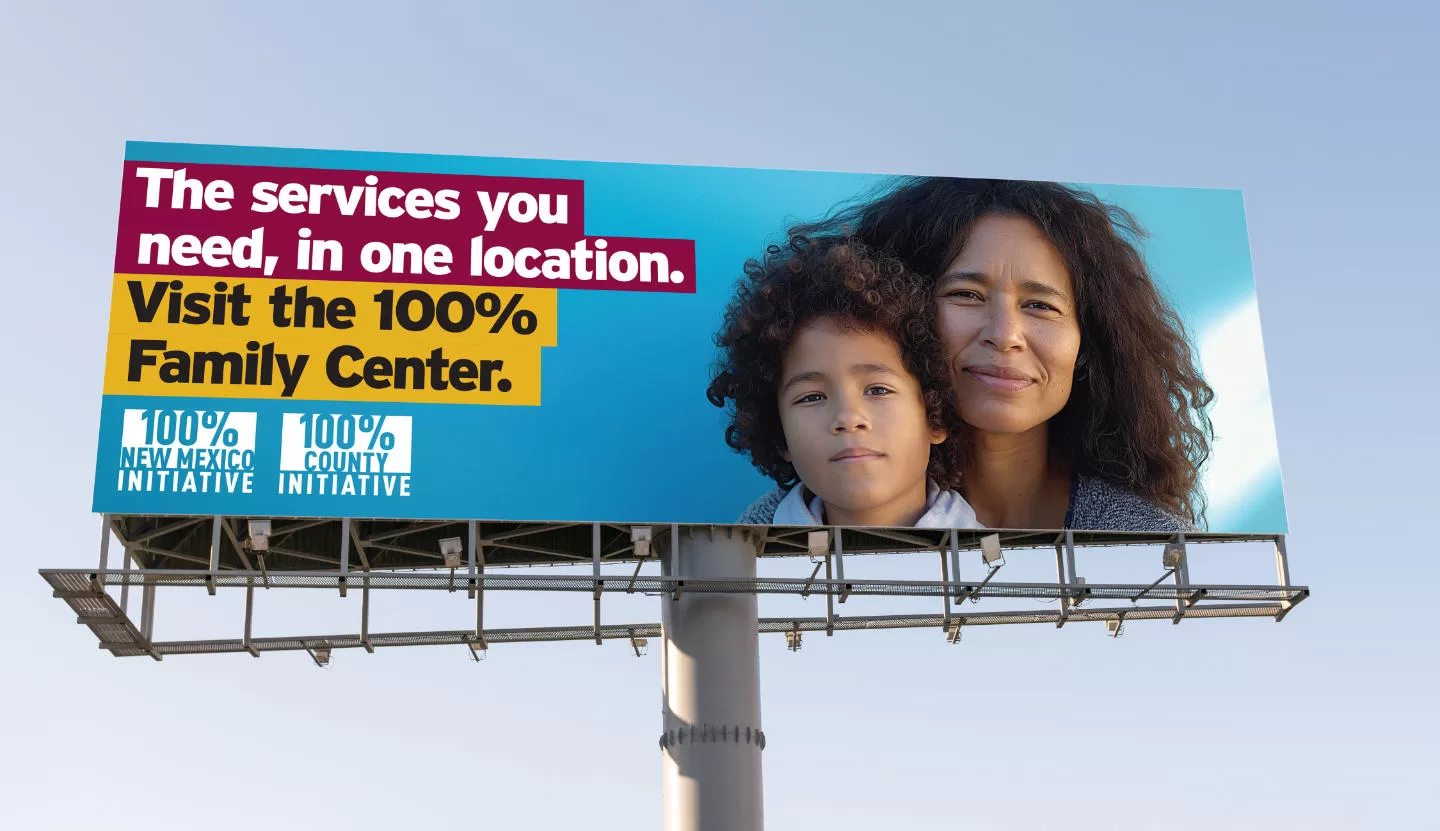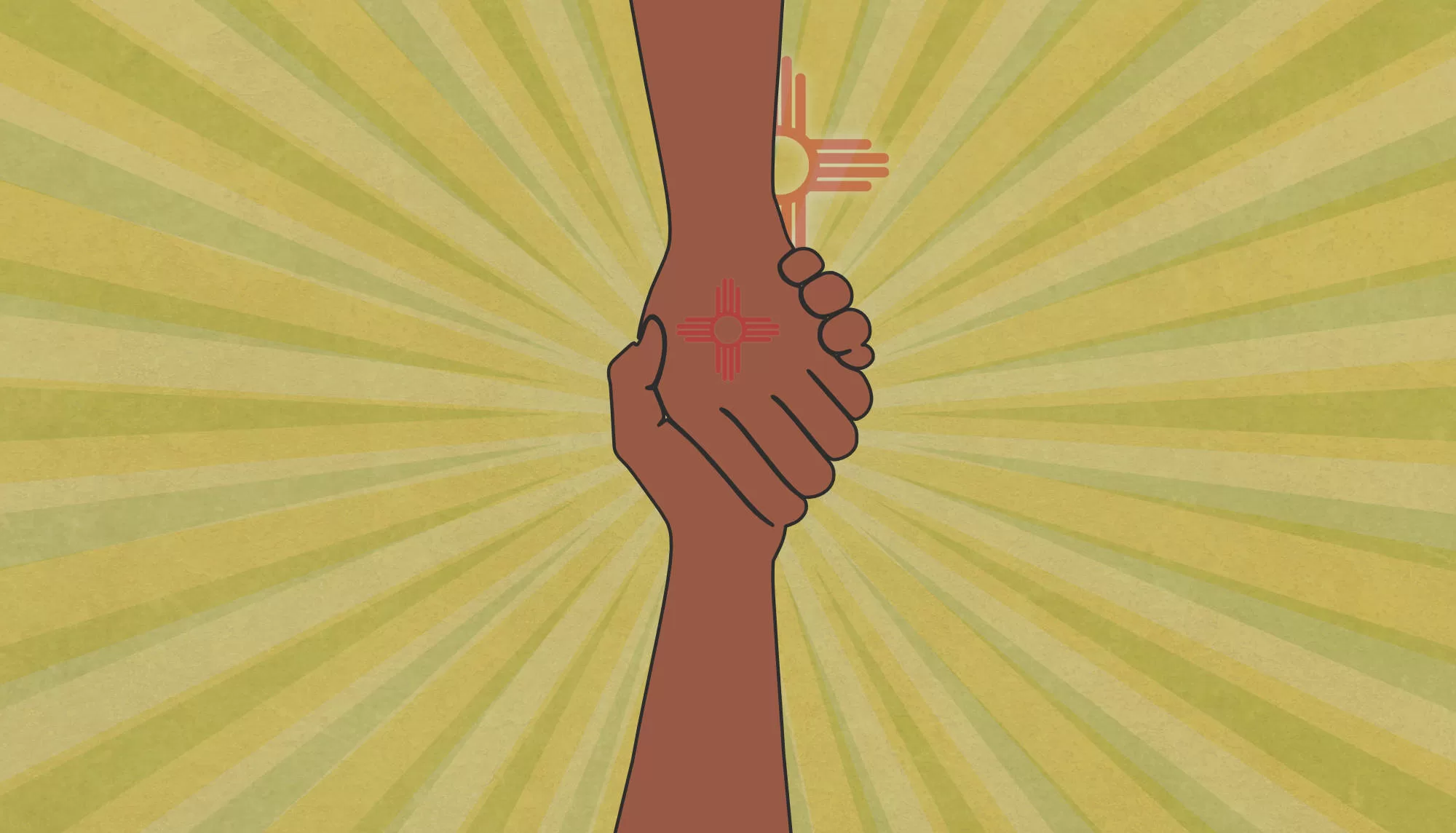The River, the Footbridge, and the Super Highway
Once upon a time, a teacher heard cries for help. Her actions show how New Mexico can become a place where all children can live happy and healthy lives. Can we learn that lesson before it’s too late?
Katherine Ortega Courtney, PhD and Dominic Cappello
The River, Footbridge, and Super Highway
A teacher strolled by a river when cries for help caught her attention. She spotted children struggling in the water, and upon rescuing them, noticed a damaged footbridge causing people to plunge into the river. Further upstream, a modern steel bridge had been built to let the super highway pass over the raging river. The super highway allowed speeding cars with wealthy passengers to safely bypass the hazardous footbridge. Faced with this dilemma, the teacher had to decide whether to keep rescuing those in immediate danger, address the broken footbridge, or advocate for all residents to have access to safe transportation over the river. Her decision would affect not only those in current peril but also the well-being of future river-crossers.
A Story about New Mexico’s Challenges and Choices
The tale of “The River, Footbridge, and the Super Highway” is underscored by societal challenges and demonstrates the importance of change agents working with the 100% New Mexico initiative to improve access to vital services for families. This story highlights the crucial role of social determinants of health, including healthcare, housing, and transportation, in shaping health, safety, education, and overall quality of life. The teacher’s predicament mirrors society’s struggle to address immediate crises, systemic issues, and progressive public policies while embracing technological advancements across health, safety, and education services. The story of pulling children out of a raging river illustrates the complex landscape in which New Mexicans strive for positive change.
Identifying Vulnerable New Mexicans: Addressing Urgent Needs
New Mexicans in dire need of support can be identified by considering children and students facing adverse childhood experiences that lead to trauma, substance abuse, and interactions with child protective services, juvenile justice, law enforcement, courts, and prisons. Many individuals also struggle with despair, disengagement from family, schools, and communities, as well as untreated medical and mental health issues. These individuals are metaphorically drowning, emphasizing the urgent need for action to address their challenges and provide the necessary support.
Stepping onto the Broken Footbridge: Exploring Societal Structural Challenges
The broken footbridge metaphor represents the failing societal structures that cause individuals, households, and communities to slip through the cracks. In some counties, essential services remain out of reach due to various obstacles such as physical distance, cost, insufficient support for working parents, long wait times, or inadequate transportation. These barriers push people into vulnerable situations, often resulting in trauma, injury, illness, and even fatalities. To gain a deeper understanding of the severity of the lack of vital services for survival and well-being, we encourage you to read our new report.
Who Rides The Super Highway: Accessibility and Self-Sufficiency
The super highway metaphor symbolizes households with the means to access vital services, representing positive social determinants of health. These individuals reside in areas of New Mexico where services are easily accessible, of high quality, and contribute to an elevated quality of life. They enjoy the benefits of well-resourced communities and schools, where quality services effectively tackle challenges and open new doors for learning and work opportunities. This metaphor highlights the stark contrast between the experiences of those who have access to essential resources and those who do not.
Creating Systems of Safety through “Systems Thinking”
The story of rescuing children from the river exemplifies the interconnected challenges associated with transforming adverse social determinants of health, specifically the lack of quality services, into positive social determinants characterized by accessible, timely, and high-quality services. To navigate this complex landscape, systems theory can provide valuable insights. This holistic approach considers the interdependent components of communities, cities, counties, and states, including governments, non-governmental organizations, businesses, media, technology, and individuals.
Systems theory is instrumental in addressing social determinants, as it enables policymakers to make informed decisions based on potential return on investment, such as improved health and well-being for children, students, and families in safe and self-sufficient households. Systems thinking can help identify unintended consequences and guide decision-making processes based on data, like the percentage of New Mexicans unable to access essential services in all 33 counties and the underlying reasons.
State and local stakeholders increasingly recognize the importance of systems thinking for tackling socioeconomic and health inequities, driving systemic change, and improving overall health outcomes. As an inherent component of social determinants, systems theory offers a roadmap to transform adverse social determinants into positive ones. This approach emphasizes the significance of considering the broader context and connecting the dots to promote health equity.
New Mexico: From Under-Resourced to Rich in Resources
New Mexico’s ongoing transformation into a state where essential services are readily available has captured nationwide attention as we are the first state with a university sponsored statewide strategy to transform adverse social determinants into positive ones, ensuring 100% of families have access to ten vital services. The 100% New Mexico initiative has identified four critical strategies to strengthen positive social determinants of health and improve the lives of its residents.
Strategy One: 100% Family Centers: One Stop Service Hubs
This game-changing approach involves establishing 100% Family Center: One Stop Service Hubs, offering families onsite, online, or navigator-assisted access to ten vital services. The Hub’s service team will ensure families can conveniently access the support they need. The Hub’s quality improvement team will work to address local service barriers documented in our 100% New Mexico County Survey, providing family members with more access and service options.
Strategy Two: Schools as Centers of Learning and Healing
Our public schools can be centers for academic achievement, community-building, and civic engagement. By developing school-based family resource centers, schools can become service hubs where social workers connect students and families with crucial services. Moreover, schools can prioritize robust behavioral health care to address adverse childhood experiences and implement a community school model to assess and strengthen the capacity to meet the needs of students, parents, and the wider school community. The 100% Service Hub’s quality improvement staff can support school transformation across their county.
Strategy Three: Addressing Local Workforce Shortages
With the 100% Service Hub’s quality improvement staff, each county will have the capacity to address workforce shortages in healthcare, education, and social work by fostering “grow your own” programs. This countywide strategy increases collaboration with the center’s staff, schools, vocational institutions, higher education, workforce development experts and the private sector. The “grow your own” program represents a bold strategy to increase jobs in essential areas, catapulting New Mexico from a state of scarcity to one rich in resources.
Strategy Four: Leveraging Technology to Increase Services
As New Mexico races into artificial intelligence (AI)-assisted future, its transition from agrarian, industrial, and information eras unfolds at breakneck speed, mirroring the rapid transformations experienced by states nationwide. AI will be utilized to enhance, improve, and expand all ten vital services outlined in the 100% New Mexico initiative and all areas of the public and private sectors. The center’s quality improvement staff will lead this effort across public sectors, streamlining service delivery in both rural and urban areas, along with supporting training in tech use.
Lessons Learned by the River
The raging river analogy serves as a powerful reminder of the complexities involved in addressing the lack of access to vital services, representing adverse social determinants at its most detrimental. The collaborative efforts of the 17 counties engaged in the 100% New Mexico initiative strive to create a state where all children, students, and families can thrive and contribute to their communities. Together, we can bridge the gap and build a brighter future for New Mexico where thriving children is the norm.
Mission: The 100% New Mexico initiative is dedicated to ensuring that 100% of families can access ten vital services crucial for their overall health, resilience, and success. This university-sponsored endeavor necessitates the local implementation of evidence-based strategies encompassing both community and school-based service hubs, aiming to prevent the most pressing and costly public health and safety challenges, including adverse social determinants of health and adverse childhood experiences.
Did you know? Our transformational 100% New Mexico initiative is guided by web-based, self-paced courses provided free to all New Mexicans.

Don’t miss a blog post! Get notified!
The 100% New Mexico initiative is a program of the Anna, Age Eight Institute at New Mexico State University, College of Agricultural, Consumer and Environmental Sciences, Cooperative Extension Service. Contact: annaageeight@nmsu.edu or visit annaageeight.nmsu.edu to learn more.








